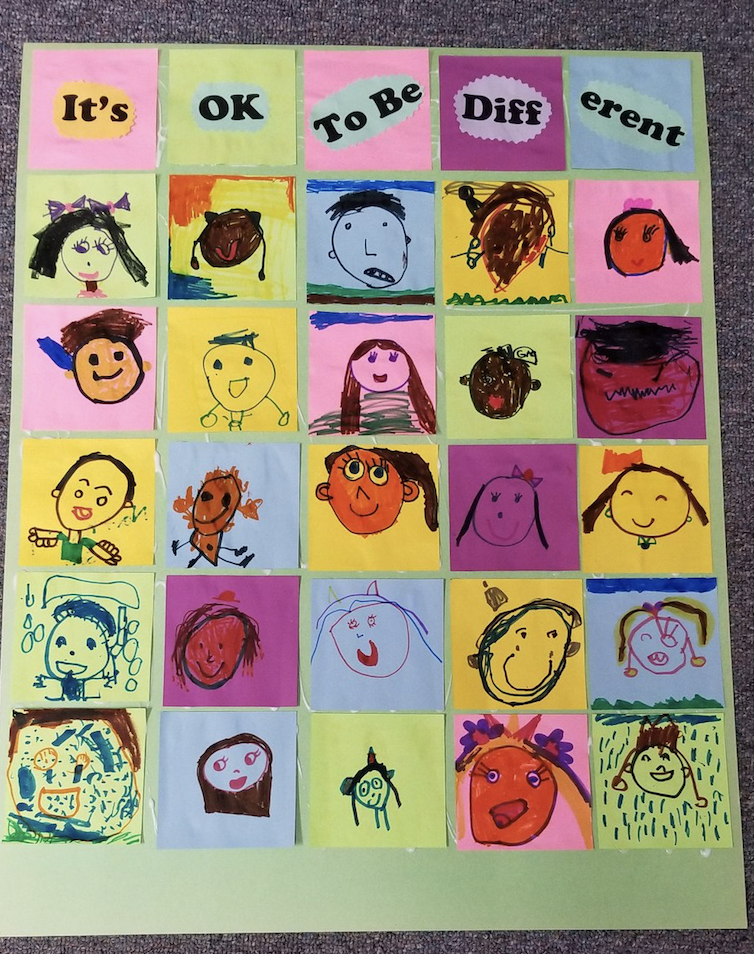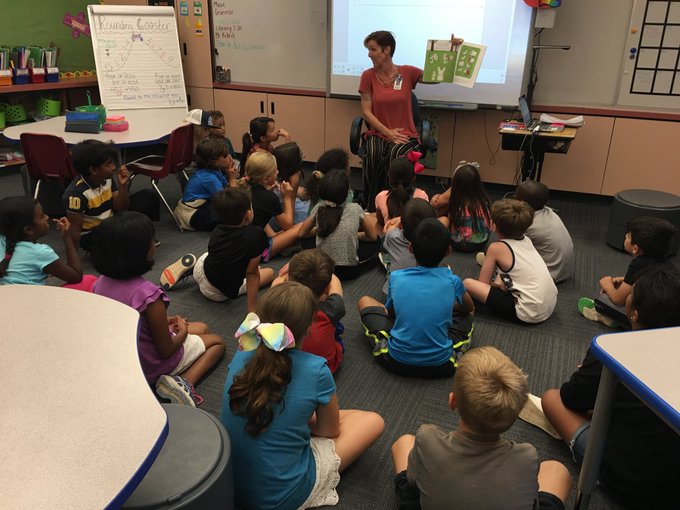By. Jay Greenlinger
Climate of Care
Oak Park Unified School District (OPUSD) has a history of breaking from the norm. Whether it’s being named the first U.S. Department of Education Green Ribbon School District in California (2013) or adopting an elementary literacy program with no textbooks or workbooks, OPUSD seeks to do the right and best thing for all students, all the time. We call this approach our Climate of Care, and it’s at the heart of all we do. It was in this spirit that we decided to add the topic of gender diversity to the elementary counseling program at our district’s elementary schools.
Through our teachers, counselors, and administrators, we know that we have transgender, genderfluid, and/or agender students at each of our schools. It’s likely that we always have. Until recently, school leaders were confused and unprepared to help these students navigate some of the issues they encounter at school. In the words of Superintendent Dr. Tony Knight, also a former OPUSD elementary principal, “We did work to ensure that every child at school was to be treated with dignity and respect. That was sometimes difficult when families, teachers, and even myself were ignorant of the topic.”
Setting the Stage
As the number and depth of issues related to the experiences of gender non-conforming students rose, we looked to Director of Student Support and School Safety, Stew McGugan, and our elementary counselors to lead the way. Counselor Holly Baxter researched school-based gender diversity programs in Seattle, San Francisco, and British Columbia to find out how these trailblazing districts handled such a challenging, sensitive, and potentially divisive topic. After months of research and discussion, we set out to create counseling lessons that address age-appropriate topics related to gender.
We are aware that gender non-conforming students face a higher rate of mental health concerns, suicidality, or at-risk behaviors, and that education and modeling of acceptance by supportive adults decrease bullying and harassment. We also know that inclusion and acceptance of diversity create a more positive school climate and decrease bullying for all students, not just those who may be targeted by harassment. So, in the name of our Climate of Care, we started by bringing more knowledge of this topic to our staff. Stew and Holly led trainings at staff meetings so that staff could build empathy for students across the gender spectrum. It’s likely that each staff member brought to mind a current or former student whose expressed identity now made more sense.
With staff trained and more knowledgeable of the gender spectrum, we set out to create age-appropriate counseling lessons that could be part of our social-emotional lessons, which are delivered monthly to all elementary classrooms by our elementary counselors. Each lesson in gender diversity begins with a book read aloud to students. Afterward, students are led through a discussion of the topics presented in the book and then finish up with a shared art activity.
Public Opinion
As the program rollout approached, many parents and community members began to express doubt, fear, and anger about teaching these lessons to young children. There were outspoken parents in the community who didn’t believe that gender diversity was “age appropriate” for elementary students. Some felt that discussion of gender identities beyond male and female was contrary to their religious or personal beliefs. This was an emotionally charged time in our small suburban community.
While some of the concerned community members set up meetings to learn more or express their doubts, others took to social media, news media, and other public forums to attempt to derail the program. Dozens of public speakers expressed support or disapproval at school board meetings. A group of parents even made efforts to encourage others to keep their children out of school in protest of the lessons. On the other hand, OPUSD and the school board heard from parents of gender diverse students and from a few brave students who sought to publicly share their experiences as gender diverse children in our schools. In an effort to make the gender diversity lessons more transparent, we created a webpage with information about the lessons on #OakParkConnects, a website devoted to OPUSD’s student wellness efforts.
Despite strong feelings all around, the school board and district leadership’s sense of doing right by our students was undeterred. In a letter to the community, Dr. Knight wrote: “Oak Park schools are inclusive learning environments where children are loved and honored for who they are. In order to ensure that we are creating safe learning environments for our children, schools may not simply ignore these children for fear of offending someone. Our role is to create a positive environment in all of our schools and to help our learning community understand these issues on a deeper level.”

Lesson Implementation
Over the course of about two months, OPUSD’s elementary counselors visited every elementary classroom and presented the gender diversity lessons to students. The lesson schedule was shared widely with parents, so everyone was informed about when the lessons would take place. Some parents used this information to foster discussion with their children. A few parents at each school used the information to keep their students home during the lessons. After the lessons were presented, we received a lot of feedback from parents about the lessons and their impact on students. At our December 2019 board meeting, one parent commented that “for the first time [his child] came home from school having felt seen by their school.” Powerful words indeed. Many parents wrote unsolicited comments about the lessons too.
We also surveyed our elementary teachers to get their perspective following the lessons. Eighty-nine percent agreed that the lessons “encouraged acceptance” and 82% said the lessons were a “positive experience.” Overall, 93% of teachers responded that the lessons were “appropriate for the age of [their] students.” Stew and Holly met with the counseling team and teachers to reflect on the lessons and suggest improvements for next year’s gender diversity lessons. We plan to refine the lessons for the 2020 – 2021 school year, and a group of educators is already working on a plan to bring this topic to middle school classrooms.
What Does Gender Diversity Have to Do with Green Schools?
In today’s charged political climate, schools often find themselves embroiled in debates regarding science, religion, climate change, equity, and more. As stewards of the public’s greatest resource – our children – it’s incumbent on schools to thoughtfully develop a meaningful and relevant curriculum taught in an accepting climate for learning. Some of you reading this might be fighting to include climate change in the curriculum or you might be fighting against a movement to debunk climate change as a hoax. Maybe you are trying to bring a more plant-forward menu to your school’s cafeteria. Perhaps you are attempting to decarbonize your school district. No matter the cause you are championing as an educator, you are likely to encounter doubt, fear, anxiety, or other emotions that aim to derail your work.
What we’ve learned through our work on gender diversity is that doing the right thing for students is never the wrong thing. We’ve learned that engaging with those who question your work adds to transparency. While we weren’t able to ‘convince’ everyone, we made our intentions and motivations clear and understandable. Most of all, we believed in what we were doing. With the stoic support of our school board, superintendent, administrators, and teachers, we have been able to make our schools more supportive and accepting for our students.
Learn more about OPUSD’s gender diversity program and Climate of Care and view lesson plans on our #OakParkConnects webpage.
Author Bio
Dr. Jay Greenlinger is the Director of Curriculum and Instruction at Oak Park Unified School District. Jay’s education career began at 15, when he became a camp counselor. He received a B.A. in Psychology from the University of Massachusetts, Amherst, an M.A. in Elementary Education from Pepperdine University, and an M.A. in School Administration and a Doctorate in Educational Leadership from California State University, Northridge. He is a former teacher, principal, and technology director. If Jay’s not at work, you’ll most likely find him playing outside with his wife Lisa – an elementary teacher – and their four young children.

